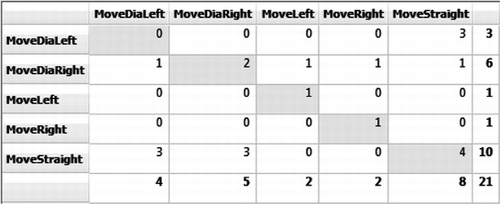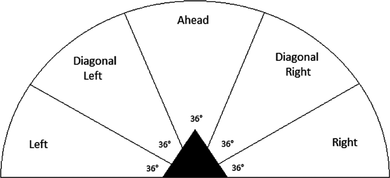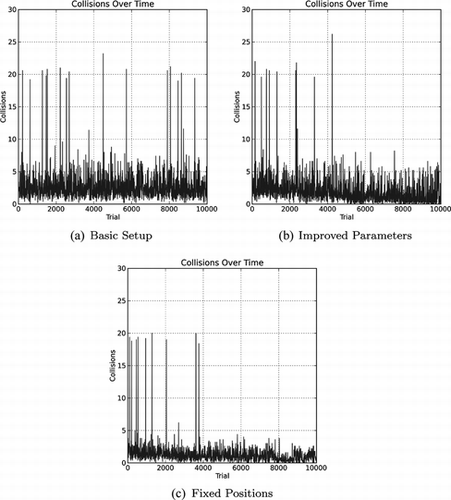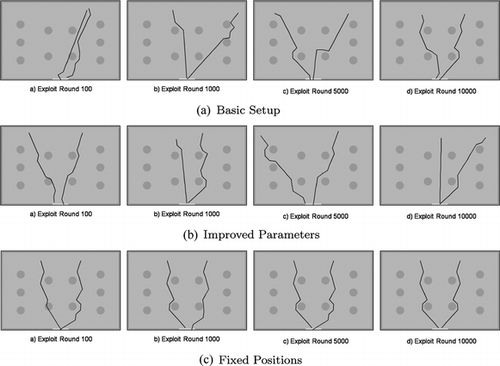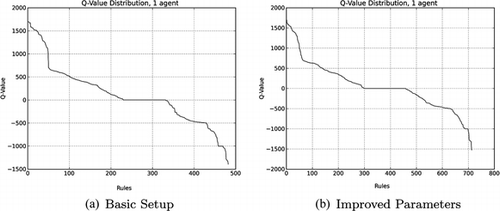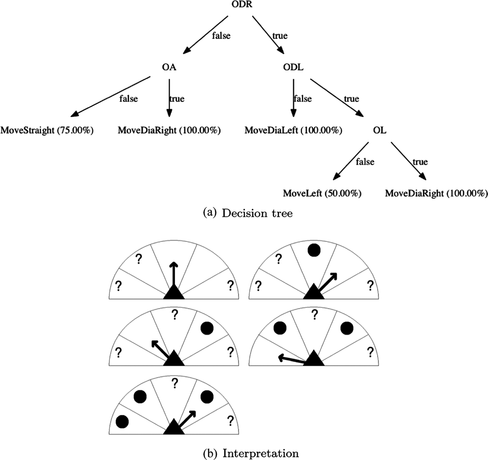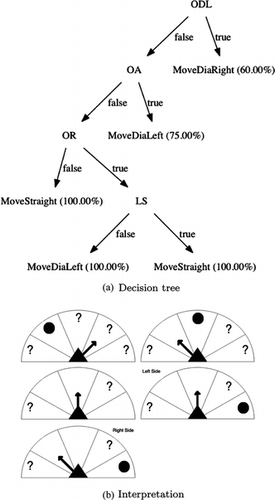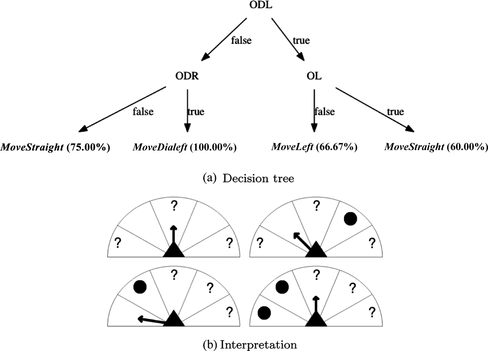Figures & data
TABLE 1 Mean Number of Collisions Per Run - Rows Represent the Number of Agents
FIGURE 7 Situation-action pairs experience distribution for an exemplary agent from a simulation with five agents.

FIGURE 8 Situation-action pairs distribution over the actions for an exemplary agent from a simulation with five agents.

TABLE 2 Classification Accuracy with C4.5 Decision Tree Algorithm, all Models
FIGURE 9 Confusion matrix for the decision tree in the simulation with five agents, basic model. Rows represent the expected class (action) and columns represent the classification determined by the decision tree.
